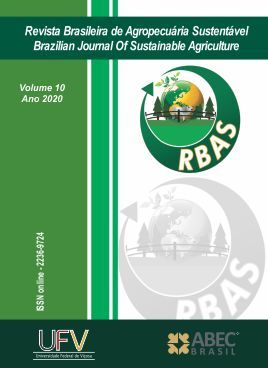ASPECTOS ETNOBOTÂNICOS DA FITOTERAPIA POPULAR NA COMUNIDADE QUILOMBOLA CONCEIÇÃO DE MIRINDEUA, MOJU-PA
DOI:
https://doi.org/10.21206/rbas.v10i1.9609Palavras-chave:
Populações tradicionais, Plantas medicinais, Toxicidade, Ecossistemas, AmazôniaResumo
A Amazônia possui uma vasta riqueza de recursos naturais, dentre estes se encontram as espécies de plantas medicinais que tem um valor cultural bem presente para muitos povos tradicionais. No entanto, ainda existem várias espécies desconhecidas ou pouco elucidadas pela ciência que são bastante utilizadas por populações tradicionais. Diante disso, o presente estudo objetivou fazer um levantamento etnobotânico de plantas medicinais utilizadas pelos moradores da comunidade quilombola de Conceição de Mirindeua utilizando entrevistas semi-estruturadas. As entrevistas aconteceram no período de outubro a novembro de 2019, com 25 (vinte e cinco) moradores com idades entre 28 a 77 anos. Os resultados obtidos mostram que a maioria dos entrevistados (64% do total) possuem apenas o ensino fundamental incompleto e renda familiar de até 1 salário mínimo. Foram citadas 86 Etnoespécies, ocorrendo a identificação de 83 pelo laboratório de Botânica da Embrapa/Belém, sendo 1 a nível de família, 68 a nível de família e espécie e somente 14 a nível de família e gênero, tendo destaque para a família Lamiaceae com 16 espécies. A forma de preparo mais citada foi o chá e as folhas tiveram maior representatividade como parte utilizada.
Downloads
Downloads
Publicado
Como Citar
Edição
Seção
Licença
1. Proposta de Política para Periódicos de Acesso Livre
Autores que publicam nesta revista concordam com os seguintes termos:
Autores mantém os direitos autorais e concedem à revista o direito de primeira publicação, com o trabalho simultaneamente licenciado sob a Licença Creative Commons Attribution que permite o compartilhamento do trabalho com reconhecimento da autoria e publicação inicial nesta revista.











